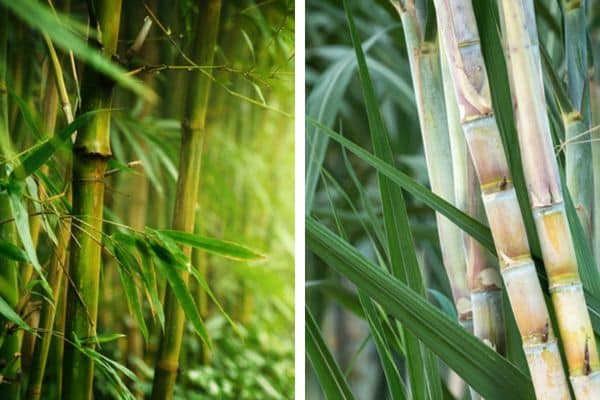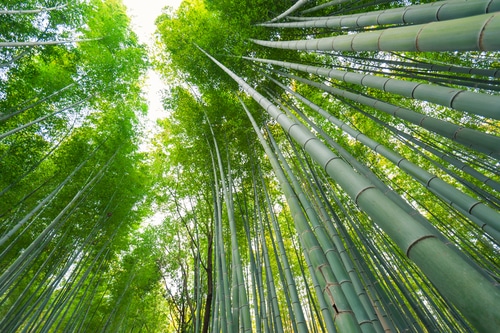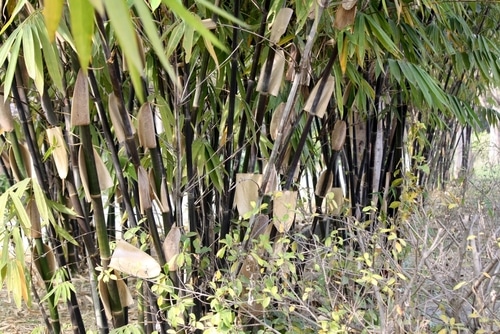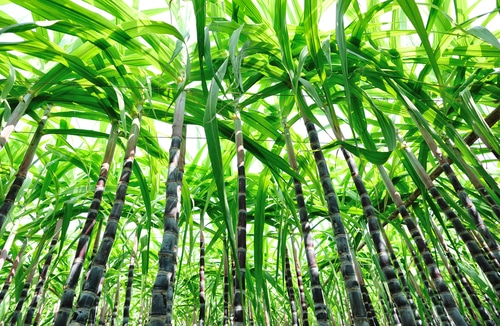
Sugar cane and bamboo are both tropical plants that grow in warm climates around the world. They are similar in that they are tall, fast-growing grasses with woody stems. However, there are some key differences between them.
What Type of Plants are They?
Bamboo and sugar cane are both perennial grasses that belong to the family Poaceae. Bamboo is a giant, woody grass with hollow stems, while sugar cane is a large, solid-stemmed grass. Both plants are fast-growing climbers that can reach impressive heights.
Height

Bamboo grows much taller than sugar cane
Sugar cane typically grows to heights of 10–12 feet (3–4 meters), while bamboo can grow anywhere from 6–100 feet (2–30 meters) tall, depending on the species. Sugar cane is hardy in USDA Hardiness Zones 8–12, whereas bamboo grows best in Zones 6–11.
Time to Reach Maturity
Sugar cane is a fast-growing plant that can reach maturity within one growing season. Bamboo, on the other hand, is a slow-growing plant and can take several years to reach maturity.
Both plants spread quickly and can be difficult to contain once established. However, sugar cane is typically stronger than bamboo since it has a thicker stem.
They Both Make Excellent Privacy Plants

Both plants are excellent sources of privacy screens or wind breaks but keep in mind their potential for fast growth and spread. With the right conditions, sugar cane and bamboo can both make for beautiful ornamental, tropical-style plants.
Bamboo Grows Taller Than Sugar Cane
When it comes to height, bamboo is the clear winner with many species reaching heights of up to 100 feet (30 meters). In comparison, sugar cane will typically only reach between 10–12 feet (3–4 meters) tall. This makes bamboo the better choice for a taller privacy screen or wind break.
Care Comparison Between Bamboo and Sugar Cane

Sun
Bamboo and sugar cane both require a lot of sunlight in order to thrive and reach their full potential. Sugar cane does best in full sun and can tolerate partial shade, while bamboo requires at least six hours of direct sunlight per day for optimal growth.
Water
Bamboo and sugar cane both require a consistent supply of water in order to thrive. Bamboo is typically more tolerant of drought conditions than sugar cane, but will still need regular watering during dry periods.
Sugar cane, on the other hand, needs lots of water in order to reach its full potential and grow tall. The amount of water needed will depend on the climate and weather conditions.
Soil
Bamboo and sugar cane both thrive in well-draining, nutrient-rich soil. Bamboo prefers a slightly acidic soil pH of around 5.5-6.5, while sugar cane prefers a slightly alkaline soil pH of 6.0-7.0. Both plants need adequate drainage but will also benefit from some moisture retention. Adding organic matter such as compost or fertilizer will provide essential nutrients for both plants.
Hardiness Zones
When it comes to hardiness zones, sugar cane is more tolerant of colder weather than bamboo and can be grown in zones 8–12. Bamboo prefers warmer climates and does best in zones 6–11.
If you’re having a hard time deciding between the two, and you live in zones 6 or 7, choosing sugarcane is the only way to go.
Both plants require full sun and lots of water, but bamboo is more tolerant of drought conditions.
Pests
Bamboo and sugar cane can both be susceptible to various pests, including mealybugs, aphids, whiteflies, spider mites, and thrips. The most common pest infestations in bamboo plants are due to mealybugs and aphids, while sugar cane is more likely to suffer from whiteflies and spider mites.
Conclusion
In conclusion, sugar cane and bamboo are similar in that they are tall, fast-growing grasses with woody stems. They differ in their height potential, growing zones, maturity rate and strength.
Both are excellent choices for a privacy screen or wind break but should be monitored to ensure they don’t spread too rapidly or become overgrown. With the right conditions, they can provide lush greenery and a tropical feel to any garden.